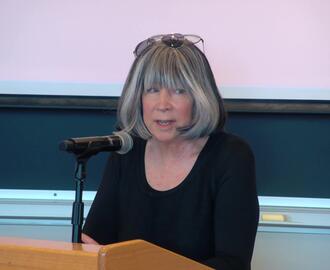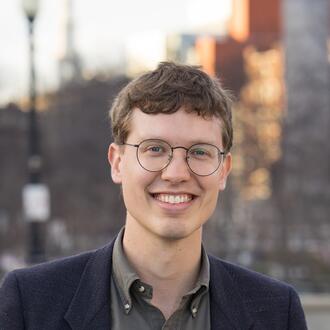For decades, MIT Sloan Professor Lotte Bailyn has been calling for changes in the way work is organized. She has argued that organizations should rethink the traditional design of work to better accommodate employees’ personal lives and the needs of two-career and single-parent families. As Bailyn wrote in her 1993 book Breaking the Mold: Women, Men, and Time in the New Corporate World:
What is needed is a different way of thinking about employees—not as workers only but as people with complicated lives for whom employment is a critical, but not the only, activity—and an acceptance of the necessary link between their private lives and the work of the organization.
MIT Sloan Professor Emerita Lotte Bailyn
From her research, Bailyn, who is now the T Wilson (1953) Professor of Management, Emerita at the MIT Sloan School of Management, came to a conclusion that was far ahead of its time: that companies could benefit from putting their employees’ personal needs front and center, and using that knowledge to redesign work in ways that benefit both the organization and employees. That concept became known as “dual-agenda” work redesign.
“Lotte Bailyn is world renowned for her ‘dual agenda’ analyses of organizational life and practices,” explains Erin L. Kelly, who is the Sloan Distinguished Professor of Work and Organization Studies at MIT Sloan, as well as Co-Director of the MIT Institute for Work and Employment Research (IWER). “She asks, beginning in the 1980s and 1990s, what organizations can do to advance the two goals of working more effectively and advancing gender equity. She went into companies and organizations of all kinds to help managers and employees reflect on their current practices and identify reasonable and feasible changes to address those two goals jointly. And she trained and taught students to think about these questions in their own management practice and in their own scholarship.”
In the process, Bailyn has had an enormous influence on scholarship about work and family. She has also advised and taught more than 60 doctoral students, including a former dean of Harvard Business School. “Lotte was highly sought after as a thesis advisor by doctoral students due to her wide-ranging scholarship and her human qualities as a mentor,” recalls Jean-Jacques Degroof PhD '02 , author of the book From the Basement to the Dome: How MIT's Unique Culture Created a Thriving Entrepreneurial Community.
Kate Kellogg, the David J. McGrath Jr (1959) Professor of Management and Innovation at MIT Sloan and another former doctoral student, remembers that Bailyn taught PhD students to view any difficulties encountered in research as sources of inspiration, insight, and new ideas. Some of Kellogg's favorite sayings of Bailyn's include:
- The most creative research comes out of going against the tide.
- One person's random error is another's Nobel Prize.
- What can you learn by where it doesn't fit?
Bailyn's colleagues, too, have benefited from her insights and mentorship. “Lotte helped me see how my research on work, if opened up and expanded in appropriate ways, could deepen our understanding of the intersections of personal, family, and work responsibilities,” says Thomas A. Kochan, the George Maverick Bunker Professor of Management Emeritus at MIT Sloan. “She is a wonderful mentor, colleague, and a pioneer in showing the importance of considering the whole person as we shape our economic and social institutions.”
In the following interview, Bailyn, now 93, reflects on what’s changed since she began her working career in the 1950s—and what hasn’t. She spoke with Martha Mangelsdorf, Director of Strategic Communications for the MIT Institute of Work and Employment Research (IWER). Their conversation has been condensed and edited for clarity.
Mangelsdorf: 2023 marks the 30th anniversary of the first publication of your book Breaking the Mold. I got a copy of the 1993 edition and was struck by how prescient it was in making the argument that work needed to change to work well for two-career families and that remote work—I think telecommuting was the word then—might be an important part of that. Looking back at the changes you called for 30 years ago, how are organizations doing?
Bailyn: Well, some organizations like law firms have created part-time tracks. And there’s certainly much more talk about integrating work and family, particularly on an individual level; groups like the ThirdPath Institute talk about how to create what they call integrated careers—adjusting one’s work situation so that one can be more present at home and more responsible for children. Certainly, many more organizations offer child care benefits and family leave, often paid. But I don’t think very many have equal percentages of men and women using them.
At some places, including MIT Sloan, the option for hybrid work is now built in. That’s a change. I remember years ago, [the late MIT Sloan Professor] Ed Schein and I shared a secretary, and she wanted to work one day a week from home. We worked it out beautifully—exactly what the conditions would be, how we could work together—but HR wouldn’t let us do it. That would not happen today.
But what organizations are not yet thinking about is how gendered their assumptions and their structures are—things that on the surface have nothing to do with gender but, in fact, assume a masculine life course and masculine traits.
Can you give an example?
In academia, the organizational structures and assumptions about an academic career have not changed. It’s craziness that our expectations about life course involve peak demands for career and family that come together at the same time. It’s crazy for both men and women.
My generation of women wasn’t subject to that. I had it easy compared to people today, because when I first got my PhD [in 1956], no one would give me a [tenure-track] job. So I had a series of part-time jobs. And that allowed me to have a lot of control: I could say no. So I had not much trouble combining that marginal work with raising two kids. Then, about 16 years after I got my PhD, in the early 1970s when universities were looking for qualified women, there I was. Those of us on the peripheries were the first ones let in.
I still think that part-time work when children are young is a very good model. I’ve written about it, and called it, at one point, the apprenticeship model and at another point, the slow burn way to the top. I have this nice diagram where the usual career goes up fast and then plateaus, but the slow burn model keeps growing gradually.
What was it like to be one of the first tenured women at MIT Sloan in the 1970s?
I did my work within the Organization Studies group; we were doing good work, and that was good fun, so that was fine. But for a time, I was the only woman on the MIT Sloan Personnel Committee. That was just awful. People just ignored me while they talked to each other. It was very unpleasant.
I can imagine you were probably pretty marginalized for a while. When did that start to change?
It certainly began to change when more women came to MIT Sloan; [the late former MIT Sloan Dean] Lester Thurow played a big role in that. Then we women faculty would get together for a meal and conversation. But we would meet someplace other than MIT Sloan, because once, when we met at an elevator in the MIT Sloan building [one of the male professors, upon seeing the female Sloan faculty together in a group] said, “Oh my God, you’re planning a revolution.”
I’m reading the book The Exceptions: Nancy Hopkins, MIT, and the Fight for Women in Science. And that book discusses the important role you played in the 1990s, when a group of women scientists at MIT began documenting the discrimination they faced. That resulted in a report, and a story in The New York Times that was quite influential.
Lotte Bailyn in 2003
There were multiple things that had to come together for that report to have the impact that it did. I was chair of the MIT faculty at the time, and I played one small role by making sure we at least got a report [about the women scientists’ findings] that could go to the rest of the faculty. I recognized that such a report was necessary in order to get the university’s okay to get the information out there, and I worked with the women scientists to produce that report. But [MIT Biology Professor Emerita] Nancy Hopkins’ perseverance and her willingness to work with all the women was absolutely critical, as was the media’s role.
What are you working on right now?
Five of us are writing a book about the transition to retirement; we’ve done research for the book over the last almost 10 years. We have quite a lot of data, but the main focus we’re using is 14 people whom we followed from before they retired to three to four years into retirement.
Teresa Amabile at the Harvard Business School is our lead author, and from Boston University, there’s Tim Hall and Kathy Kram; the fifth author, Marcy Crary, is from Bentley. The final draft is due to our publisher, Routledge, in January.
Can you give a sneak preview of the book’s findings?
We’re showing that, for corporate employees, the transition to retirement doesn’t happen the day you retire. It’s a long-standing process for people whose life was in many ways constructed around a career that structured their lives, their time, their energy—whether or not they liked their jobs. And then, all of a sudden, that huge structure, that huge part of their lives is gone. What do they do?
We’ve got 14 case studies, disguised. We find the path is similar to what other people have said: You have to decide to retire, you have to detach from work, you have to explore and experiment with new things, and, finally, consolidate a new life structure.
That’s universal, maybe, but the way people do it varies completely from one person to another. One of the things you often hear is that you need to have a purpose and meaning in retirement. But there are people who have a personally satisfactory life in retirement without this grand purpose; they’re engaged in the everyday activities of family and friends and gardens. Our book is very much attempting to show that there are very many different paths.
When you think back on all the different pieces of research and projects you’ve worked on over the decades, what do you feel are your most important contributions?
I think it’s a research project I led, with Debbie Kolb, at Xerox in the early 1990s. Our idea was to use work/family as a catalyst for change on organizational issues. Our concept was that you’ve got to put employees’ personal needs out front and deal with them at the same time that you’re dealing with the organizational strategies and structures. Because otherwise, the influence of these personal needs is hidden, and the employee is caught in the middle and can’t contribute as much to the organization.
It was a fascinating process; our research group included senior faculty and PhD students, and two of the PhD theses that came out of the work turned into quite influential books: Leslie Perlow’s Finding Time: How Corporations, Individuals, and Families Can Benefit from New Work Practices and Joyce Fletcher’s Disappearing Acts: Gender, Power, and Relational Practice at Work.
Xerox identified three sites for us to work with, where we could do an experiment that was jointly designed. Leslie Perlow’s experiment was about creating quiet time at work, where people didn’t interrupt each other. It meant you didn’t have to do your work requiring concentration at home because you were constantly being interrupted at work. Joyce Fletcher worked with some female engineers and discovered what she called relational practices in her book, which showed how women did things differently, not because they’re more caring, but because they had a better way to get things done.
Another project, among our most successful, involved a low-performing sales and service group that management had tried to bring together, but it hadn’t worked. We asked these employees to put their personal needs upfront, dealt first with what was bothering them in their lives, and then worked on organizational design to accommodate that. They ended up being the best-functioning group in terms of sales goals, and management was pleased, needless to say.
I associate the term “dual agenda”—referring to redesigning work in ways that benefit both employees and the organization—with you. Does that term stem from this project?
Yes. Later on we switched to talking about gender equity, but the dual agenda means you’ve got to look at the effects on people’s personal lives at the same time you’re looking at the work things, and that, in fact, dealing with people’s personal life doesn’t have to hurt work; it can enhance it.
We wrote a Sloan Management Review article on it in 1997. Then I coauthored the book Beyond Work-Family Balance: Advancing Gender Equity and Workplace Performance, which was published in 2002. That book was really the culmination of this work and includes the research method.
What do you think companies could learn from that work today?
Employees’ personal lives are not separate from the organization of work that organizations have developed, often over decades—and therefore, its genesis was male experience and expectations. These things are so taken for granted, you’re not even aware of them; you just assume this is the way you have to work. And isn’t good, even for the work—because work has changed too much.



